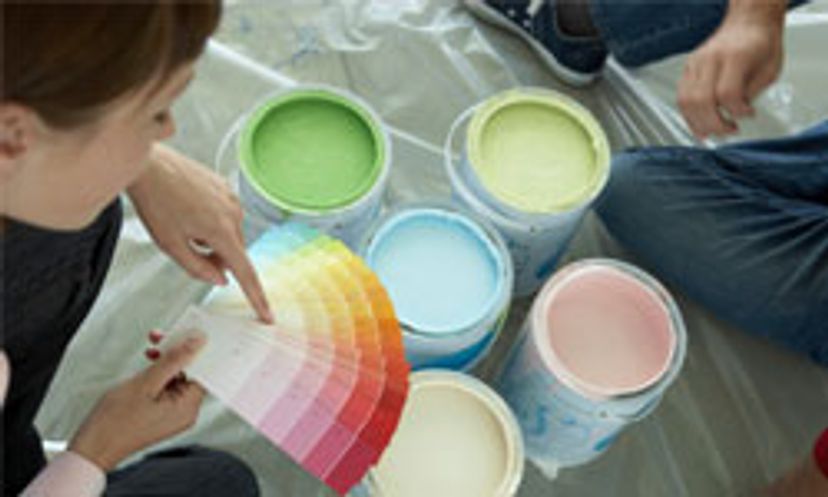
About This Quiz
Painting is one of those household tasks that can be tempting to rush. But if you're painting your brown den an airy light blue and think you can get away with using the old roller you used for the outside of the house -- or if you want to skip the primer -- you might want to think again. And what about those VOC fumes you keep hearing about? What kinds of paints have those? Take this quiz and find out for yourself.Count on about 250 to 300 square feet per gallon of paint for a typical interior paint job.
You should figure in a gallon of trim paint for every six gallons of wall paint.
Alligatoring happens when you're painting with incompatible paints or you've put a second coat over still-wet paint.
Advertisement
You should look for one that has bristles of various lengths that are tapered along the edges. This makes for a more even coat and prevents striping.
Polyester is best because it's soft and produces a smooth finish.
Nylon is tough, so it works well on rough or outdoor surfaces.
Advertisement
Because of their superior ability to hold their shape and stay stiff, natural brushes are best used when applying oil-based paints and lacquers.
Go for 9 inches for any basic wall or ceiling paint job.
A quarter- to a half-inch nap will work best.
Advertisement
A very uneven surface like stucco would require an inch-thick nap.
Piston-pump sprayers can handle thicker paint as well as thinner paints and lacquers.
Washable, reusable canvas is best if you're trying to be nice to the planet.
Advertisement
Water-based primers are less expensive, but oil-based products are often more versatile and effective.
Shellac primer is really the only way to seal in smoke odors.
There are about 10,000 chemicals in your run-of-the-mill household paint, 300 of which are known to be toxic. The worst ones are volatile organic compounds, or VOCs.
Advertisement
About 150, or half, have been connected to cancer.
VOCs continue seeping out for several years. Studies have shown that only half are released within a year of painting.
Simmering the hardware in water and trisodium phosphate (TSP) cleaner should do the trick.
Advertisement
Lead-based paint was common before the '70s, so be extra careful (ideally, get a professional to do the job) if you're dealing with paint that old.
Yes, it's true -- if they're laminate, that is. Just make sure you use an acrylic primer that's made to cover glossy surfaces, and then seal your paint with clear acrylic.